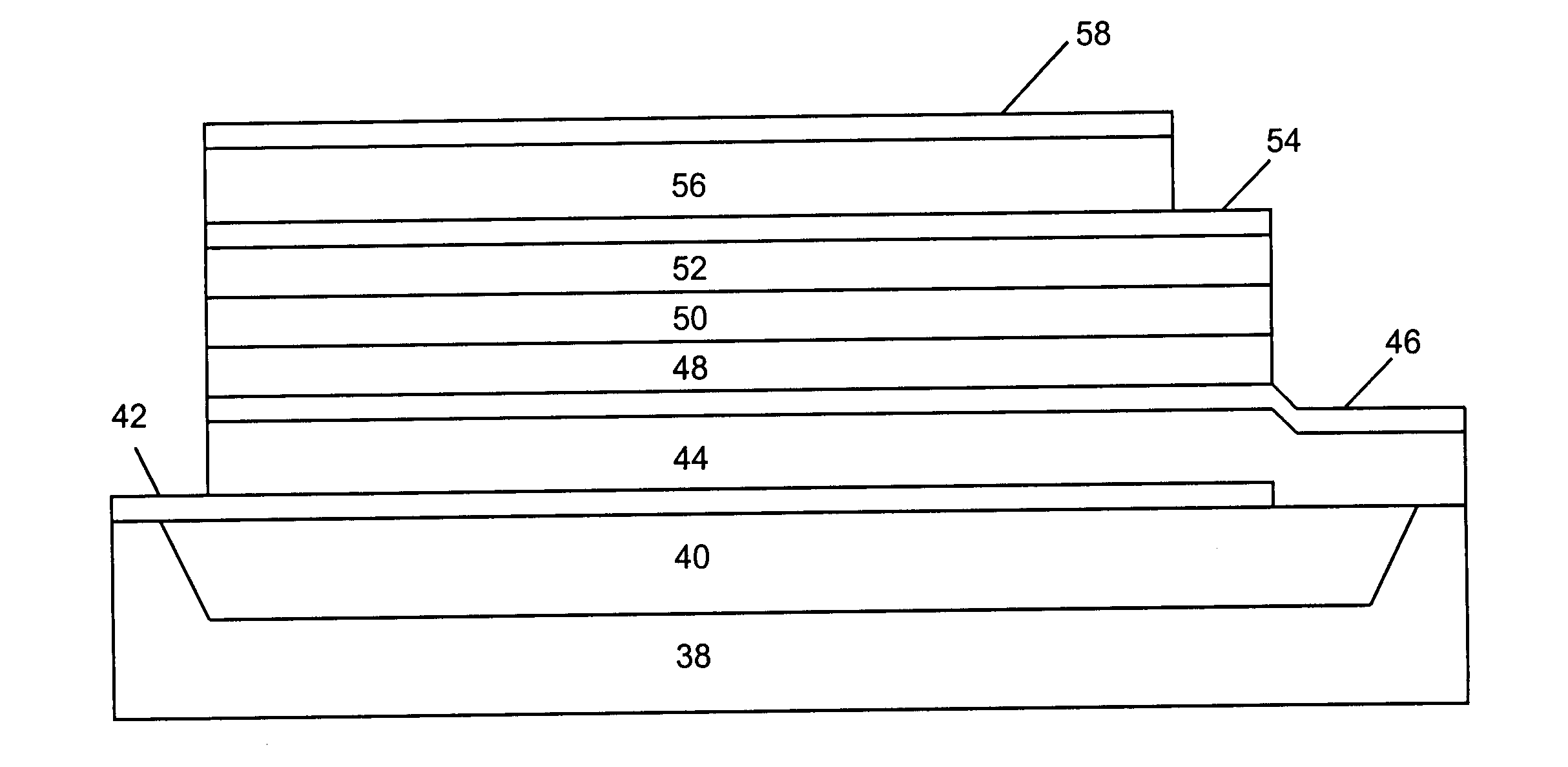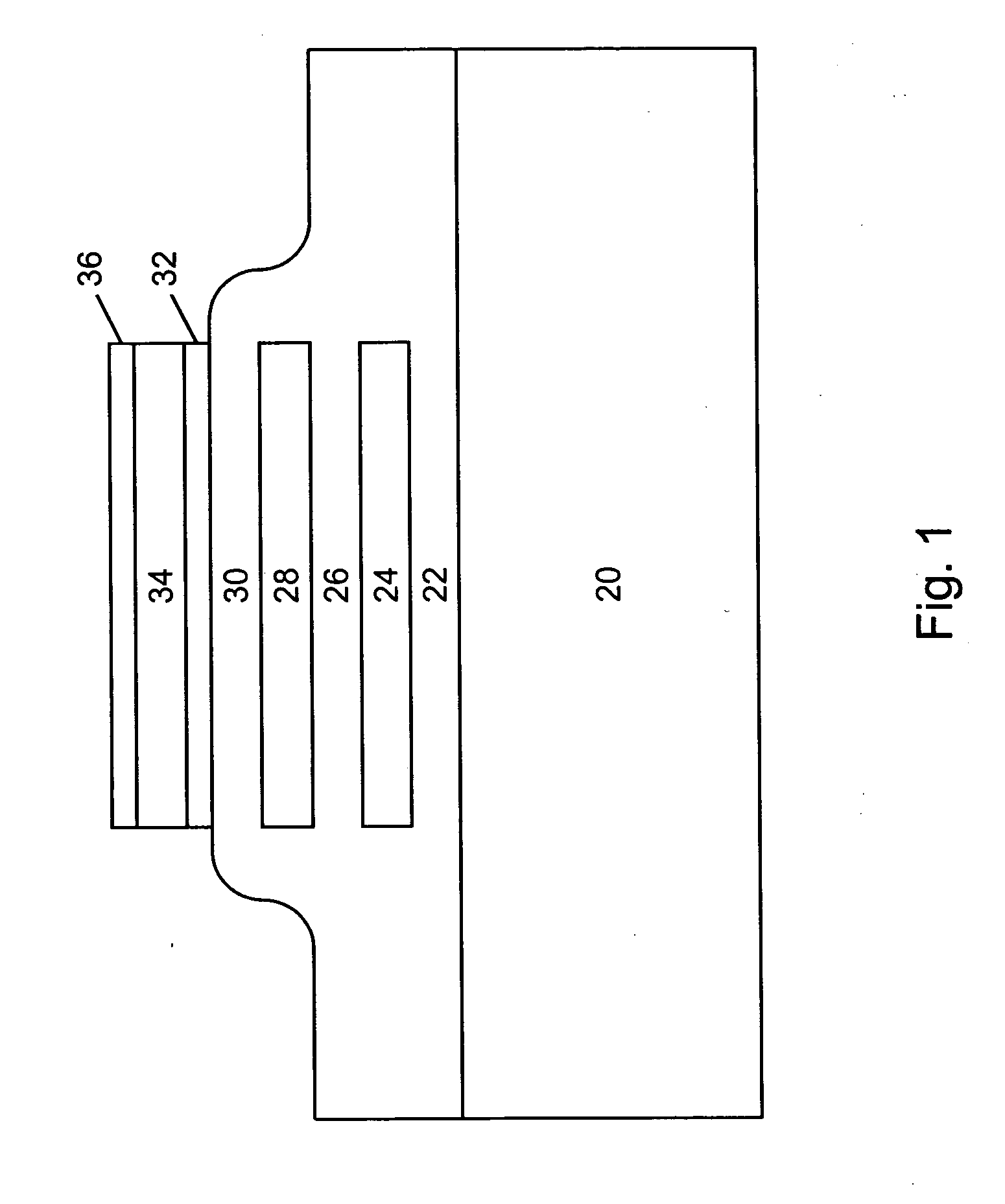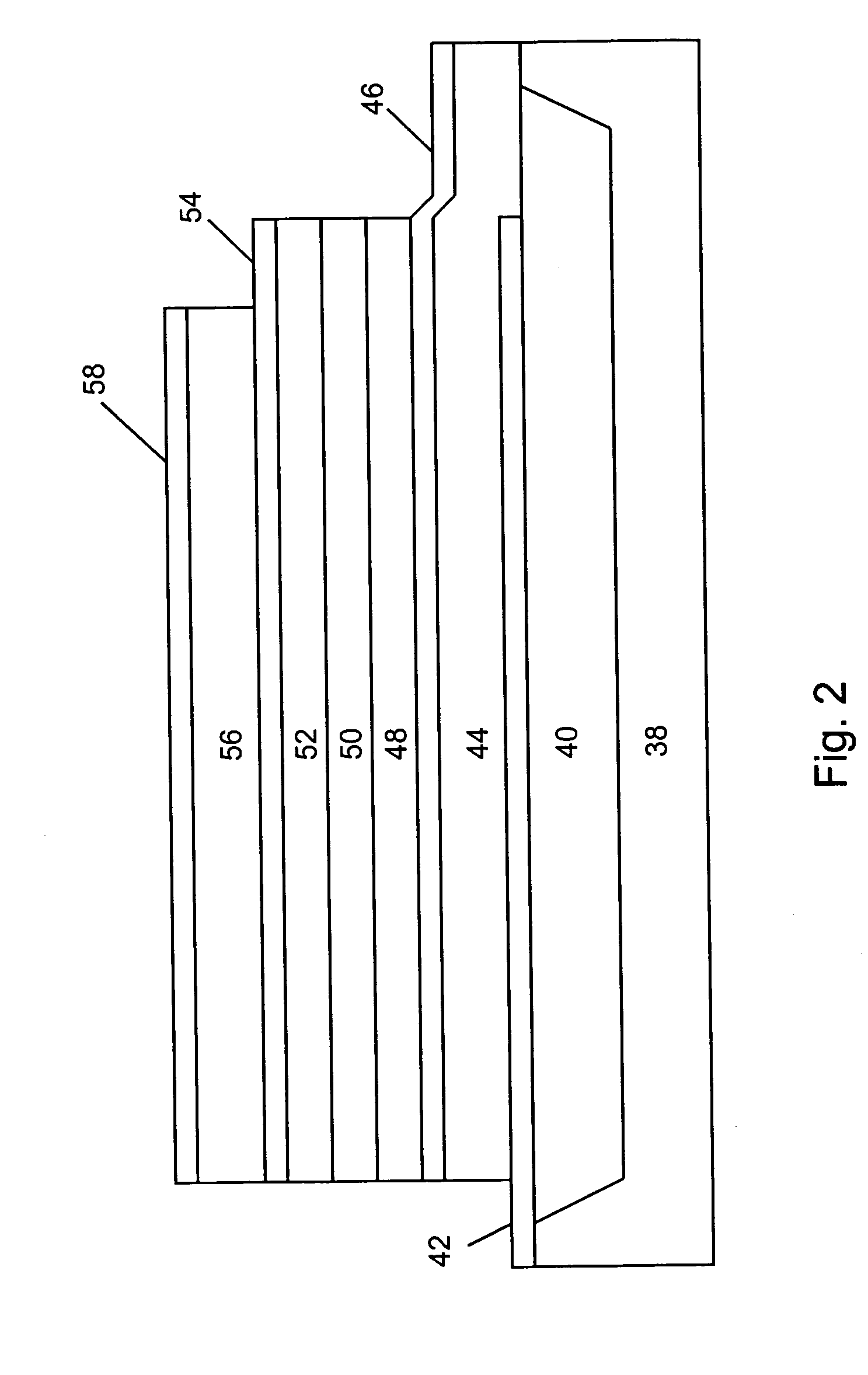Titanium-tungsten alloy based mirrors and electrodes in bulk acoustic wave devices
a technology of bulk acoustic wave and mirror, which is applied in the direction of impedence networks, electrical equipment, etc., can solve the problems of limiting the use of electrode materials, affecting the performance of devices, and not being new to the field
- Summary
- Abstract
- Description
- Claims
- Application Information
AI Technical Summary
Problems solved by technology
Method used
Image
Examples
Embodiment Construction
[0014] The present invention comprises the use of TiW as the high acoustic impedance material in the Bragg mirror stack and / or as the electrode composition or as a part of the electrode stack in the fabrication of FBAR or BAW devices (i.e. resonators and filters built from resonators). Classic IC fabrication methods are used for the basic manufacturing sequences, including depositions, photolithography, and etch processes. MEMS techniques may also be employed for packaging and resonator acoustic isolation from the substrate. The low acoustic impedance material may be silicon dioxide (SiO2) though other low acoustic impedance layers could be used if desired, such as a carbon based dielectric or Silicon-based polymer, or polysilicon, or other low-loss polymers such as polyimide, among other materials. TiW refers to a binary alloy of titanium and tungsten. Typically the titanium content should not exceed 15 percent by weight. Equally effective results have been obtained with 3 percent ...
PUM
 Login to View More
Login to View More Abstract
Description
Claims
Application Information
 Login to View More
Login to View More - R&D
- Intellectual Property
- Life Sciences
- Materials
- Tech Scout
- Unparalleled Data Quality
- Higher Quality Content
- 60% Fewer Hallucinations
Browse by: Latest US Patents, China's latest patents, Technical Efficacy Thesaurus, Application Domain, Technology Topic, Popular Technical Reports.
© 2025 PatSnap. All rights reserved.Legal|Privacy policy|Modern Slavery Act Transparency Statement|Sitemap|About US| Contact US: help@patsnap.com



